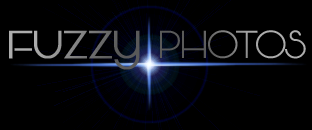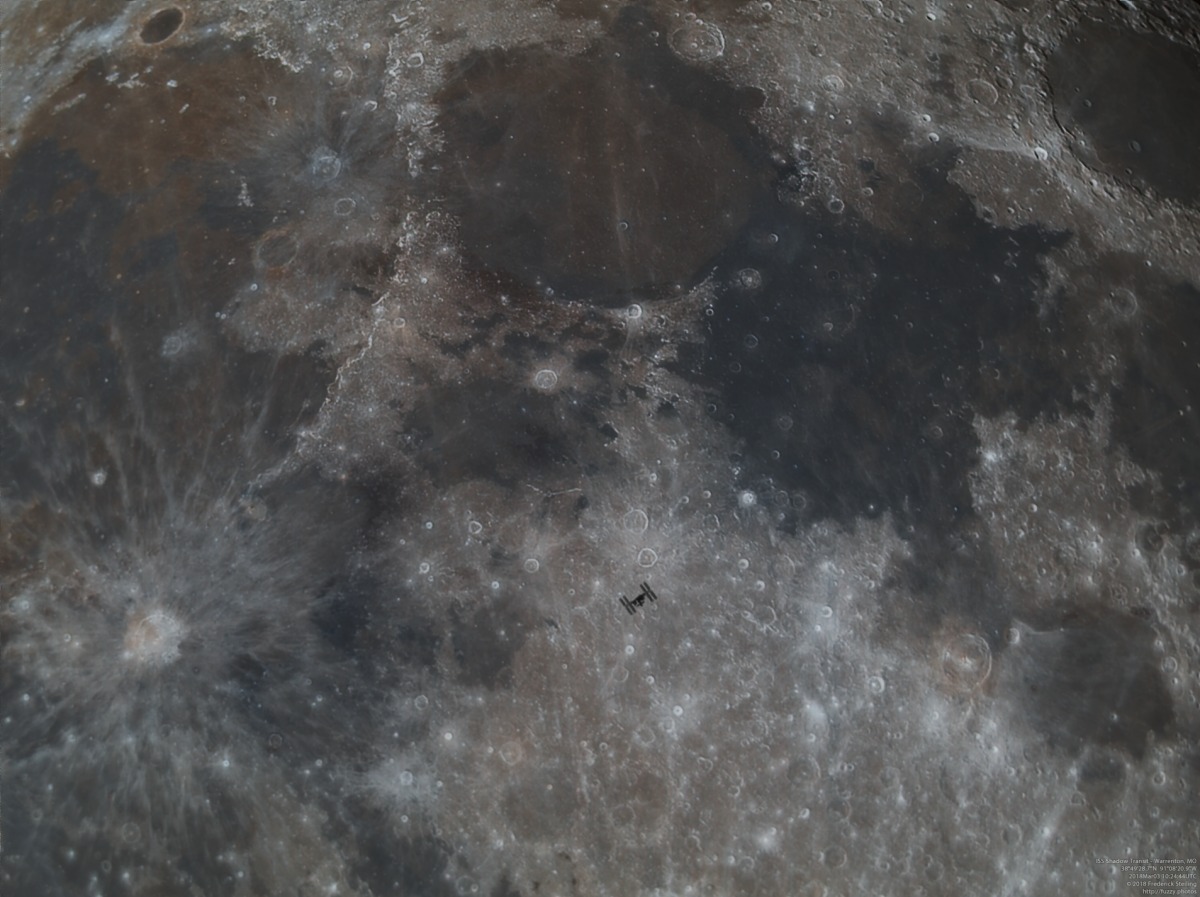Selected as the 1st place winner of the Astronomical League's 2018 OPT Imaging Award in the Video Category
| Image Links | |
| Published image | Full resolution |
| Annotated image | Full resolution |
| Transit Video | Via Youtube |
| Target Information | |
| Main Target Designation(s) | ISS Transit of the Moon |
| Exposures | |
| Date(s) of acquisition | 03Mar2018 (Transit at 04:24:44 CST) |
| Location | Warrenton, MO |
| GPS | 38°49'28.7"N 91°08'20.9"W |
| ISS Information | |
| Angular Size | 41.87″ |
| Distance | 659.98 km |
| Angular Velocity | 25.3 ′/s |
| Transverse Velocity | 4.86 km/s |
| Radial Velocity | -5.56 km/s |
| Total Velocity | 7.38 km/s |
| Moon Phase | 97.4% |
| Capture resolution | 1280x960 |
| Luminance (surface + transit) | |
| Video source | 320" at 0.265ms / 23fps |
| Gain | 15% |
| Stack (surface) | 1115 (15%) of 7434 frames |
| Stack (ISS) | 17 frames, manually aligned on shadow |
| Red (surface) | |
| Video source | 90" at 1.325ms / 23fps |
| Gain | 0% |
| Stack | 417 (20%) of 2083 frames |
| Green (surface) | |
| Video source | 90" at 1.660ms / 23fps |
| Gain | 0% |
| Stack | 421 (20%) of 2105 frames |
| Blue (surface) | |
| Video source | 90" at 1.400ms / 18fps |
| Gain | 0% |
| Stack | 162 (10%) of 1700 frames |
| Equipment | |
| Imager | ASI120MM |
| Filters | ZWO 1.25" LRGB |
| Telescope/Lens | Orion 8" f/3.9 Astrograph |
| Focal Length | 800mm (f/3.9) |
| Mount | Celestron CGEM |
| Focuser | Moonlite 2" CR |
| Accessories | |
| Focusing | Moonlite V2 Controller |
| Software | |
| Acquisition | FireCapture 2.5 |
| Guiding | FireCapture 2.5 |
| Processing | PIPP v2.5.9, AutoStakkert 3, PixInsight 1.8, Photoshop CC |
After attempting my first ISS transit one month ago, I was eager to find another after learning a thing or two on ways to improve this type of capture. With a terrestrial transit path of only 4 mi / 6km, I wasn't as lucky with location and set up quietly on a parking lot behind an Aldi, but the high lights of the nearby Walmart were no distraction from the bright near-full moon, nor did it cause me to miss a much better image of the ISS in silhouette!
On my prior capture, I had used my Olympus DSLR to take 1080p video of the event. However, upon processing, I was pretty displeased with the poor resolution available from the extracted frames with the ISS in it. (1080p is compressed video, after all!) This time I chose to use my ASI120MM planetary camera, which provides me with full uncompressed video at the cost of a much smaller sensor and therefore a much smaller field of view that does not encompass the entire lunar disc. As a result, a little extra planning was needed to make sure I had the exact ISS path estimated across the surface for my specific GPS location -- I'd hate to be pointing at the wrong part of the moon after hours of driving and setup! The planning paid off, and I nailed the centering and have come out with an image I'm incredibly proud of.
There are several components involved with generating this full color lunar landscape from a monochrome camera and stacking the space station while in the Earth's shadow for best resolution:
- For acquisition, I took a 320" luminance video split across the transit time with the goal of extracting the ISS frames individually, and using the rest of the frames for the surface luminance stack. RGB filtered videos were taken directly afterwards.
- The surface composition was processed as I normally would, with individually stacked L, R, G, and B videos, subsequently combined in processing to generate the final image.
- 17 ISS frames were extracted from the original luminance video. I selected my favorite frame (the 6th) as the ISS position to be retained in the final photo. I aligned the other 16 shadows to it, and performed an "average" integration with no pixel rejection. After sharpening the resulting shadowed ISS, I used a Photoshop selection and layer blend to expose the stacked ISS over the processed RGB surface.
I am really pleased with the result here, and with as well as I was able to estimate the path center on the camera, I think I'll try this with a 2x barlow in place next time around and see if I can extract even more ISS detail.

